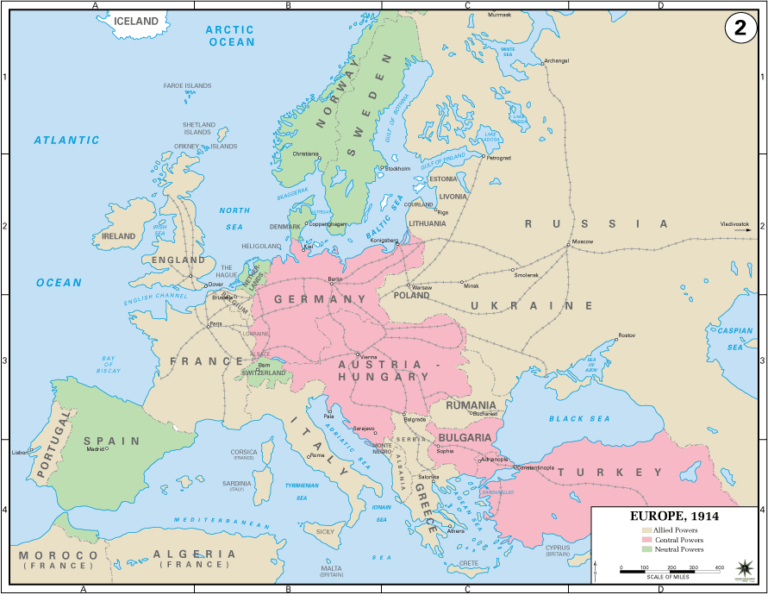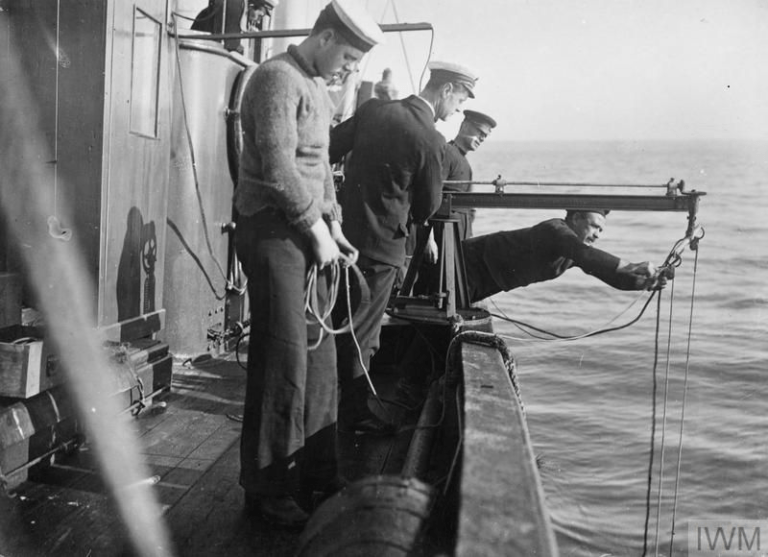Wartime Innovations: World War I
Mohammad Tanvir Hossain –
World War I, also known as the Great War, was an international struggle that engulfed more than 100 nations in the world, including the majority of European countries, between 1914 and 1918. The war was fought between the Allies or Entente Powers (primarily France, Great Britain, Russia, Italy, and, from 1917, the United States) and the Central Powers (primarily Germany, Austria-Hungary, Bulgaria, and the Ottoman Empire). Officially, Germany was mostly to blame for the war’s four years of unimaginable carnage. But several complex reasons, including a gruesome assassination, contributed to the war.

Technological innovations and breakthroughs, emerging with the industrial revolution were crucial in shaping how WWI was waged. The industrial revolution greatly assisted the development of the tools and equipment needed to maintain the intensity of the war.
These innovations made it possible to create numerous weapons, tools, medical technologies, etc. that were vastly superior to the older traditional processes in terms of qualities. These could be manufactured or processed a lot faster and at a much bigger scale than ever before.
Stainless Steel:
Just before WWI began, an armaments race between European colonial countries served as the backdrop for the development of stainless steel. Harry Brearley, an English metallurgist, found that adding chromium to molten iron created steel that would not rust.
Despite not being utilized for weaponry, stainless steel gained prominence in WWI due to its application in the production of aircraft engines, silverware for mess kits, and medical equipment. In aviation engines, this steel’s high-temperature resistance was utilized.
Motorized Armored Vehicles:
With the invention of the Internal Combustion (IC) engine and rubber tire, motorized vehicles became more popular and came in a growing variety, including armored cars, motorbikes with sidecars, trucks, and ambulances.

Military Aircraft:
Planes were another mode of transportation that was completely new at that time. They were mostly employed to spy on adversaries and scout out the front lines from above. However, by the conclusion of the war, that was completely changed. Aircraft carrying passengers, mail, or bombs had started to fly frequently and planes were acknowledged as crucial military weapons.

Anti-Aircraft Weapon:
Since there were few airplanes in service and their military utility had not yet been established, dedicated anti-aircraft weapons were uncommon at the start of WWI. As anti-aircraft defenses, both sides installed machine guns on tripods. Although machine guns could fire quickly, they could not travel as far as bigger caliber artillery shells.
Germany introduced an 88mm high-velocity artillery gun as an anti-aircraft weapon in 1917. It made it possible for anti-aircraft gunners to more precisely determine their bearings to bring down Allied aircraft.
Simultaneously, the British produced certain specialized anti-aircraft weapons in various calibers. The most popular was a “pom-pom” gun variant.

Pilotless Drone:
In 1916 and 1917, the US Navy produced the first pilotless drone as an unmanned aerial bomb, which was essentially a cruise missile prototype. Ultimately, the point-and-fly targeting strategy was too inaccurate to be effective against ships throughout the conflict.

Air Traffic Control:
In the early days of flight, once a plane took off, the pilot was essentially cut off from the ground, unable to receive any communications beyond simple indications sent by flags or lamps. This changed as a result of the U.S. Army’s efforts, which saw the first functional two-way radios placed in aircraft during WWI. In 1917, a human voice was successfully relayed by radio from an aircraft in flight to a ground operator for the first time.
Aircraft Carrier:
The first time an airplane was launched from a moving ship HMS Hibernia was in May 1912. It was not a genuine aircraft carrier as planes had to land on the sea first and then be rescued, which significantly slowed down operations. The first real aircraft carrier was the HMS Furious, which was converted from a battle cruiser. On 2nd August 1917, Squadron Commander Edward Dunning successfully made a Sopwith Pup (single-seater biplane fighter aircraft) landing on the Furious, making him the first person to do it.

Tank:
The tank, a British invention, proved as the most crucial vehicle in the closing years of the war. Initially, its main purpose was to help soldiers safely cross active fighting zones, but soon a more offensive variant with a rotating turret was created. In April 1917, the French deployed their first tank; ultimately, they manufactured more tanks than all other nations combined. More than 3,600 tanks were constructed by Renault in 1918.

Machine Gun:
Though this weapon was invented in the 1800s, it was not until WWI that the weapon came into its own, as mechanized slaughter took place on a scale scarcely imagined before. Early machine guns were hand-powered, not automatic, which by the start of WWI were fully automatic weapons that could fire up to 450 to 600 rounds per minute. By 1914, German forces had 12 thousand machine guns, compared with a few hundred between the French and British.

Hand Grenade:
The hand grenade, a weapon that would help define close-quarters fighting in the 20th century, made its debut during WWI. Before that its military use had been sporadic and the technology was relatively basic.

Poison Gas:
The Germans invented and deployed mustard gas for the first time on the battlefields in 1915. The sulfur-based gas burned the victims’ throats and chests before suffocating them. One issue with gas was that it would frequently blowback at the troops using it, hurting their own rather than the enemies.
Gas Mask:
As the conflict dragged on, anti-gas defenses advanced in sophistication. The British Army provided crude cotton face pads moistened in sodium bicarbonate to its soldiers in 1915. Over the course of around 5 minutes, the bicarb soda in the “Black Veil” combated a typical chlorine concentration. By 1918, it was normal practice to neutralize the gas by using filter respirators with charcoal or chemicals.

Flame Thrower:
A portable and far more lethal variation of the antiquated flame throwers appeared during WWI, initially by the Germans and later adopted by the British and the French army. This weapon was so terrifying that it had even been incorporated onto tanks by the end of the conflict.

Tracer Bullet:
The tracer bullet is a British invention that made night battle easier by emitting small amounts of flammable material that left a phosphorescent trail. The fact that the incendiary compound could ignite the hydrogen and so was ideal for “balloon-busting” the German zeppelins that were then terrifying England contributed to its popularity.
Depth Charge (Underwater Bomb):
The German U-boat campaign against Allied shipping resulted in the loss of thousands of servicemen and civilians, and millions of tons of cargo, and forced the Allies to devise a strategy to counter the submarine threat. The depth charge, essentially an underwater bomb that could be launched from a ship’s deck using a catapult or chute, provided the solution. A hydrostatic gun that detected water pressure was used to trigger depth charges at specific depths, ensuring that neither the launch ship nor other surface vessels would be harmed. On 22nd March 1916, the depth charge destroyed its first German U-boat.

Hydrophone:
Reginald Fessenden, a Canadian inventor, created the first hydrophone in 1914. He initially developed the concept as a technique to find icebergs after the Titanic disaster, but it had limited application because it could only determine the distance from an underwater item. The hydrophone was further developed by Paul Langevin of France and Constantin Chilowsky of Russia who were successful in determining both the distance and direction of an underwater object. In April 1916, the hydrophone claimed its first U-boat victim. Later Americans develop an improved version that could detect U-boats up to 25 miles away.

Guided Missile:
Some of the earliest guided missiles were introduced during WWI though they were never really employed in warfare.
Fullerphone:
Fullerphone was a portable telegraph signaling instrument including both Morse code and speech facilities. It was created by Algernon Clement Fuller, a British Army Signal Corps member during WWI, to prevent the Germans from gathering intelligence in the trenches.

Blood Storage and Transfusion:
WWI was a catalyst for innovation in medicine. Three timely discoveries made earlier in the century — that not all blood is the same, that sodium citrate could be used to prevent it from clotting, and that it could be refrigerated — made blood storage and transfusion during the war possible.
The first blood bank was established on the Western Front in 1917 by Captain Oswald Robertson, a U.S. Army physician working with the British Army. Blood was mixed with sodium citrate to prevent clotting and stored on ice for up to 28 days to simplify storage.

Mobile X-Ray Machine:
The demand for the new wonder weapon of medical diagnostics, the X-ray, during WWI was great, with millions of soldiers suffering severe, life-threatening wounds. However, these required very big machines that were both too heavy and too fragile to move.
Here comes Marie Curie, who built mobile X-ray stations for the French military. By October 1914, she had put X-ray machines in several automobiles and small trucks that toured smaller surgical stations near the front. There were 18 of these “radiologic automobiles” or “Little Curies” in use by the conclusion of the war.

Sanitary Pad:
Kimberly-Clark, a US company, trademarked their recent innovation, the creped wadding as Cellucotton, which was five times more absorbent than cotton and cost half as much to produce, and sold it to the American military for surgical dressing during World War I since cotton was in short supply. However, Red Cross nurses found another use for the cotton substitute as makeshift sanitary pads.
Meatless Sausage:
This was one of many replacements developed by Germans during WWI in response to food shortages brought on by British blockades, which also included utilizing sawdust to create bread and colored newspaper strips for clothing.
The vegetarian sausage known as “Kölner Wurst” or “Cologne sausage” was created by Konrad Adenauer, the mayor of Cologne (who would go on to be elected Chancellor of Germany following World War II). It was prepared with soy, wheat, corn, barley, and pulverized rice. Because it lacked the same flavor as the meat version, it did not become very popular in Germany.
Zipper:
The zipper was mass-produced during WWI for the first time. The reputation of the device’s durability was ultimately aided by the military and naval designers who bought zippers for flying suits and money belts during WWI.
Wristwatch:
Before WWI, there were wristwatches, but they were frequently just pocket timepieces attached to leather straps. As a result, they were more frequently an adornment for women than a necessary piece of equipment for the average person.
WWI completely changed this perception due to a military strategy known as the creeping artillery bombardment. Accurate timepieces were required for the soldiers to coordinate these movements because careful synchronization between artillery gunners was necessary to provide a field for infantry to advance behind.
The wristwatch was regarded as being so crucial to the soldier in 1917 that the British War Department started providing wristwatches to all fighters. This resulted in the wristwatch becoming an essential component of the contemporary soldier’s gear.




